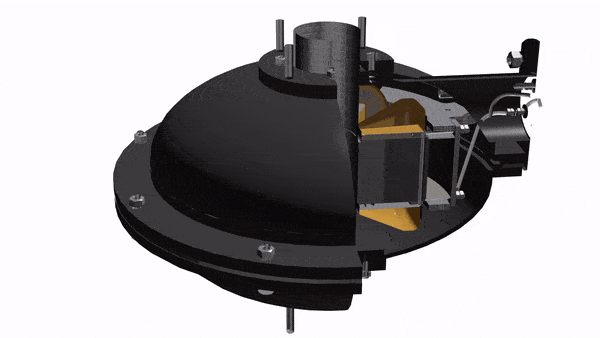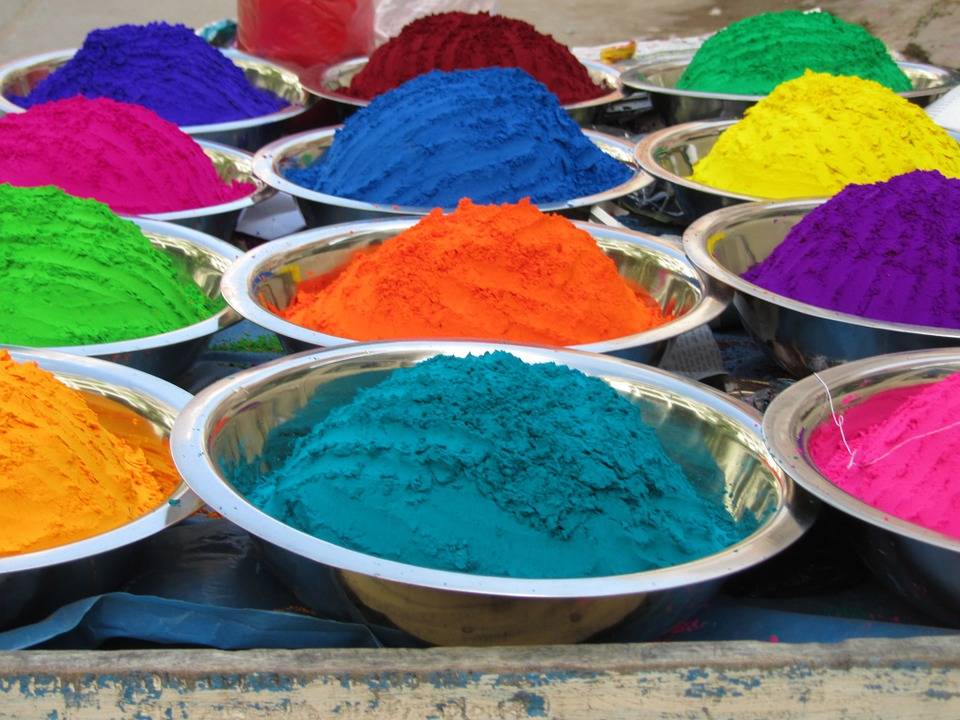Chalk regrinding in the vortex layer device
These devices – are a complex interaction between the particles, that are a result of rotating electromagnetic field, fluid and processed material. The process of grinding and mixing is speeded up.

The grinding effect is determined by the nature of the movement of ferromagnetic elements in the working chamber of the device – in a free collision of particles with the ferromagnetic elements, and constrained collision between two elements or elements and the chamber.
GlobeCore perfected this technology and launched production of vortex layer devices AVS 100 and AVS-150, to be used in production of fine-dispersed chalk – and in regrinding the raw materials.
Quartz sand granulometric composition after grinding in the AVS
| Initial fraction size, micron | Amount of sand of the fractions, %, depending on grinding time, minutes |
||||
| 1 | 3 | 5 | 7.5 | 10 | |
| +500 | 14 | 13 | 6 | 3 | 1 |
| +200 | 62 | 34 | 15 | 3 | 1 |
| +160 | 3 | 2 | 1 | 0 | 0 |
| +100 | 5 | 5 | 3 | 1 | 1 |
| +63 | 2 | 4 | 5 | 3 | 2 |
| -63 | 14 | 42 | 70 | 90 | 95 |
Vortex layer devices intensify the process of obtaining fine-dispersed chalk and receive high quality products. Devices are reliable and can be easily installed in the premises without special foundations. When choosing a particular arrangement (in sequence, parallel, etc.), almost any production line for fine-dispersed chalk could be achieved.
Advantages and disadvantages of disintegrators
Disintegrator is a device that consists of two rotating in different directions rotors, each one is set on a separate shaft or directly on the motor shaft. Disintegrators have high performance, low metal consumption and high energy consumption. However, these disintegrators have their drawbacks. In particular, there are problems to increasing performance of disintegrators because it overloads the rotors. Also, there is considerable wear of cylindrical fingers which increases proportionally to the speed and the size of processed particles.
The structure of almost any composite material includes a filler. Often it is a component of natural or artificial origin, which is introduced in order to reduce cost and impart desired properties to the final product. Usually, this could be: hardening, reinforcement, sealing, etc. Thus fillers must meet certain requirements, most important of which is the high degree of dispersion.
Most widely used fillers are chalk, dolomite, talc, asbestos, wood flour, kaolin and limestone. In this article we will talk about a finely-dispersed chalk (calcium carbonate). Its area of application covers the production of dry construction mixes, plaster, grout, paper, rubber, plastics, paints and cable products.
Methods of producing chalk
Two methods can be used to obtain chalk. The first is – crushing rocks and sedimentary deposits. The second is – resorting to chemical precipitation. Generally, the particles of natural fillers are larger than the raw material obtained by precipitation.
The form of fine-dispersed chalk particles is determined by the shape of the crystals and the grinding process. In practice, two methods are used for grinding – dry and wet. In wet grinding – the particles obtained are more smooth and round, and cause less wear on the equipment. Therefore, this method is often more preferred..
One of the most popular ways of getting fine-dispersed chalk involves coarse crushing of raw material, magnetic separation, regrinding in a disintegrator, collecting suspension, with the introduction of the dispersant, enriched in hydrocyclones, secondary fine grinding, second suspension collection, controlled screening and spray drying. On completing secondary crushing and collecting of suspension – it is again washed and dried.
The mere listing of the stages suggests the complexity of this process. Moreover, the finished product obtained by this algorithm does not have very high quality and purity. Therefore, many manufacturers are looking for the opportunity to improve existing processes, to obtain a better product and solve waste problems.

